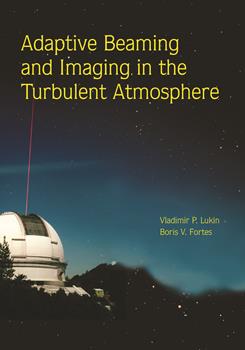|
A key aspect of the numerical simulation of turbulent effects is generation of 2D random phase screens that imitate distortion of the wavefront during propagation through the atmosphere. One of the first papers devoted to numerical simulation of turbulent distortions of optical waves was by Buckley, who used a Fourier transform (method of spectral samples) to model 1D random phase screens [1]. In papers by Fleck, Morris, and Feit [2], Kandidov and Ledenev [3], and Konyaev [4], the method of spectral samples was used to generate 2D random phase screens in the problem of propagation of a coherent beam through a randomly inhomogeneous medium and, in particular, for estimating the efficiency of phase correction of atmospheric distortions. In a paper by Martin and Flatte [5], a similar method was used to study the probability density of intensity fluctuations.
The Fourier transform method was originally used for numerical simulation in radio engineering [6]. However, a prominent feature of the turbulent atmosphere as a randomly inhomogeneous medium is the wide range of spatial scales of refractive index inhomogeneities. To correctly simulate all of the scales (from inner to outer) of turbulent fluctuations, a computational grid should have at least a thousand nodes along every coordinate, which leads to huge computational time and expense.
To overcome the difficulties connected with the wide-band spectrum of atmospheric turbulence, it makes sense to use some âcombinedâ method, which was first proposed in papers by Duncan and Collins [7, 8], as well as in a paper by Tel'pukhovskii and Chesnokov [9]. The main idea consists in the joint use of spectral (harmonic) and polynomial representations, each of which is used to simulate its own region of spatial scales: spectral decomposition is used to simulate small-scale inhomogeneities, and polynomial decomposition is used to represent scales larger than the size of the computational grid. This approach was further developed in Fortes and Lukin [10], where it was generalized to include nonstationary (dynamic) problems. More recent approaches for optical modeling [11] and physical modeling [12], as well as numerical approaches have also been developed.
|


